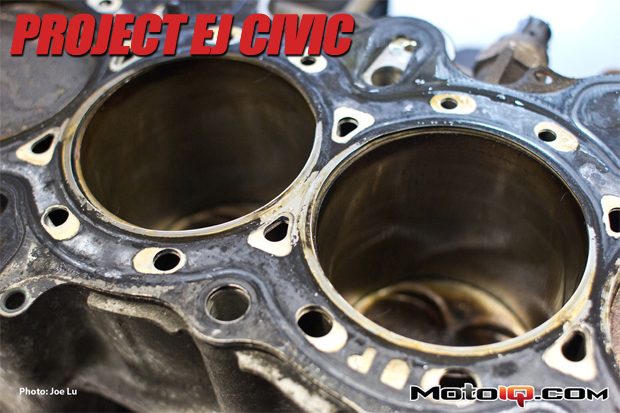,
 |
We repeated this same inspection on the deck of the engine block, but found that the deck flatness was well preserved at .0015″. Must likely, enough coolant remained in the block to keep its deck from warping. However, the other half of the coolant supply for the cylinder head had probably worked through the damaged areas of the head gasket to end up vaporized during the firing stroke.
 |
With the carnage pretty well established, we sent the cylinder head off to Port Flow Designs to deck the warped surface of our cylinder head, re-cut the valve seat with a trick radiused valve job, de-shroud the valves, and port and polish the runners. You can read more about Tom Fujita’s legendary headwork here.
 |
Since resurfacing a cylinder head, de-shrouding the valves, and re-cutting valve seats can all affect combustion chamber volume and ultimately compression ratio, it’s always good practice to verify the chamber volume after most cylinder head work.
Measuring Chamber Volume
Measuring chamber volume is actually quite easy. Place the cylinder head upside down on a flat, horizontal service. The more horizontal the surface the easier this process will be for you. Install the same style spark plug that you will use in your final engine build. This might seem a bit anal, but different types of spark plugs, such as surface discharge, have varying amounts of volume around the insulator tip.
 |
Remove each valve and place a light amount of grease around the circumference of each valve and install them into their respective locations.
It will not be necessary to install the springs, retainers, or keepers. However, if they are already installed you can just apply a small amount of grease around the outer circumference of each valve to ensure a good seal. Wipe the excess grease off with a shop towel if necessary.




